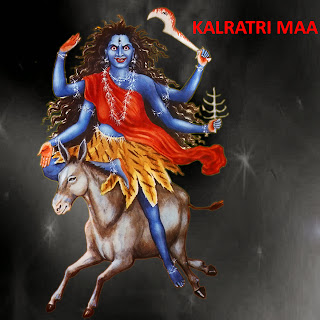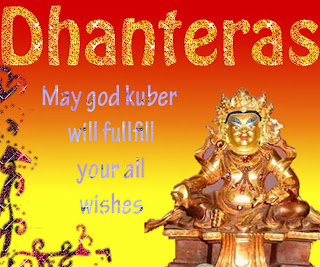Vijayadashami 2013
Vijayadashami also known as Dashahara, Dussehra, or Durgotsav is India’s one of the most significant festivals celebrated in various forms, across India. The name Dussehra is derived from Sanskrit Dasha-hara literally means removal of ten referring to Lord Rama’s victory over the ten-headed demon king Ravana. The day also marks the victory of Goddess Durga over the demons Mahishasur.
As the name suggests Vijayadashmi or Dussehra is celebrated on the tenth day of the month of Ashwin according to the Hindu lunisolar calender which corresponds to September or October of the Gregorian calender. The first nine days are celebrated as Maha Navratri or Sharada Navratri and culminates on the tenth day as Dasara.
Victory of God Rama over Ravana
As per Hindu religion, Shri Ram, the seventh avatar of Vushnu, killed the great demon Ravan who had abducted Rama's wife Sita to his kingdom of Lanka. Rama, his brother Lakshman, Hanuman and an army of monkeys fought a great battle to rescue Sita. The entire narrative is recorded in the epic Ramayana, a Hindu scripture.
‘Shri Ram’ had performed "Chandi Homa" and invoked the blessings of Durga, who blessed Rama with secret knowledge of the way to kill Ravan. On the day of Ashvin Shukla Dashami, Rama's party found Sita and defeated Ravan. Thus it is termed as Vijaya Dashami. The ten different heads of Raavan are symbol of ten bad habits in a human, which are represented as :
1.Kama vasana (Lust)2.Krodha (Anger)3.Moha (Attachment)4.Lobha (Greed)5.Mada (Over Pride)6.Matsara (Jealousy)7.Swartha (Selfishness)8.Anyaaya (Injustice)9.Amanavta (Cruelty)10.Ahankara (Ego).
Therefore by burning Raavan every year, we burn the Raavan that prevails inside us and takes us to the wrong path. To eliminate the evil completely from earth it is important for all to kill the evil that resides inside us first. This is the main significance of the festival Dussehra.
The celebrations of Dussehra are very unique as they depict the complete life of lord Rama for over 9 days and it ends on 10th day with the death of Raavan. The act of Lord Rama’s life is popularly known as ‘Ramleela’ all over the country. Ram Lila begins on the first day of Navaratris, when the enactment of Rama Drama begins. The whole life story of Rama, right from his birth on earth, his childhood, his education and training, his winning over Sita in a sweyeambar (Competition). His coronation to be, his exile, encounter with demons in safeguarding Rishi ashrams, stealing away of Sita, meeting Ahalyabai, meeting Hanuman, friendship with Sugrieva, invasion of Sri Lanka and the killing of Ravana and return to Ayodhaya all these incidents, form topics for day performance over the stage, in most parts of India.
On the last day, the day of Dussehara, the effigies of Ravana, Kumbhkaran (Ravana’s brother) and Meghnath (Ravana’s son) are burnt with an arrow shot from Rama’s bow. The crackers fitted inside the effigies explode with great noise and to the laughter of the crowd in Dussehara fair.
Dussehra is a pious symbol of victory of good over evil. It teaches a person to be courageous in all the situations and not to leave the path of good in any case.



Comments
Post a Comment